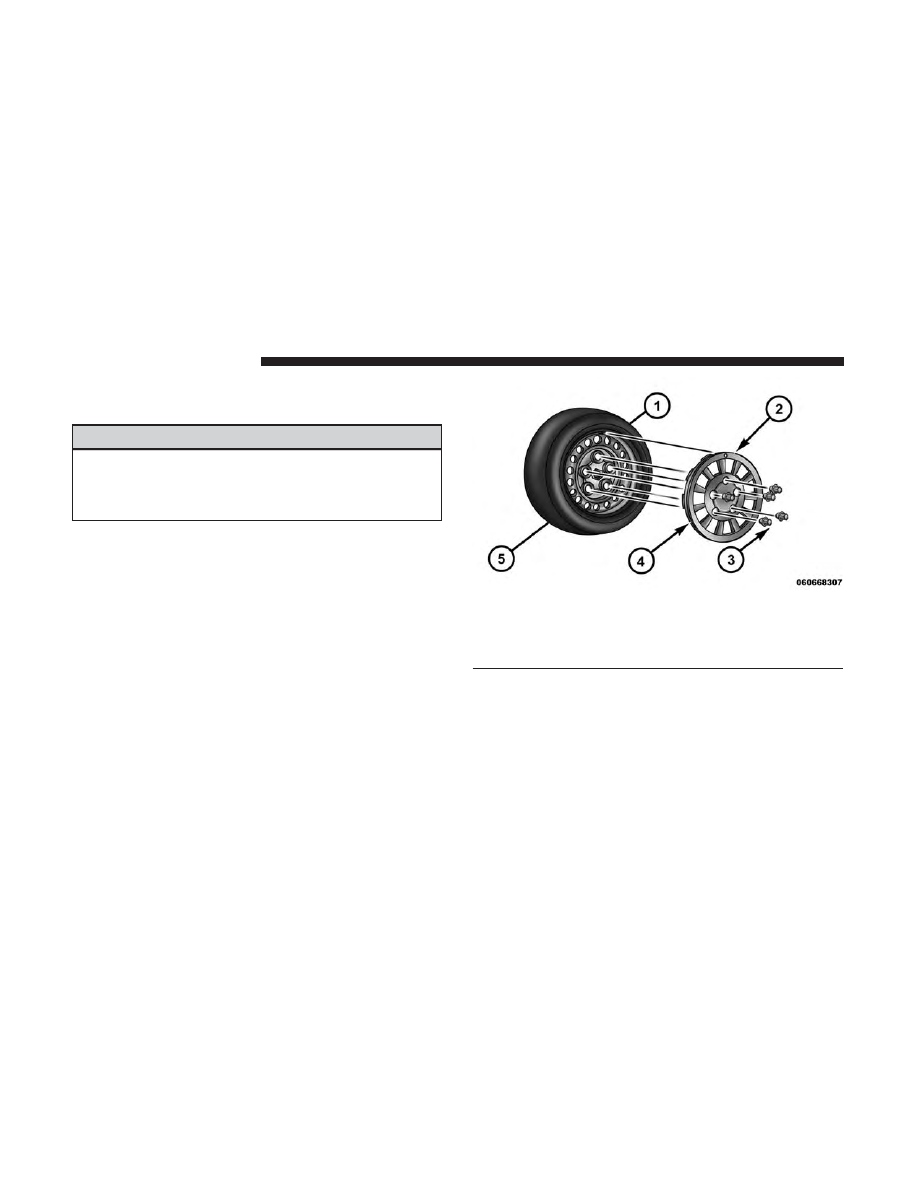Jeep Patriot (2017 year). Instruction - part 17

9. Place the deflated (flat) tire in the cargo area, have the
tire repaired or replaced as soon as possible.
WARNING!
A loose tire thrown forward in a collision or hard stop
could injure the occupants in the vehicle. Have the
deflated (flat) tire repaired or replaced immediately.
10. Check the spare tire pressure as soon as possible.
Correct the tire pressure as required.
Road Tire Installation
Vehicles Equipped With Wheel Covers
1. Mount the road tire on the axle.
2. Align the valve notch in the wheel cover with the valve
stem on the wheel. Install the cover by hand. Do not use
a hammer or excessive force to install the cover.
3. Install the five wheel lug nuts with the cone shaped end
of the nut toward the wheel. Lightly tighten the lug
nuts.
Tire And Wheel Cover Or Center Cap
1 — Valve Stem
4 — Wheel Cover
2 — Valve Notch
5 — Road Wheel
3 — Wheel Lug Nut
256
IN CASE OF EMERGENCY